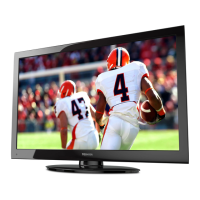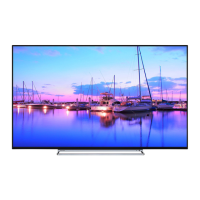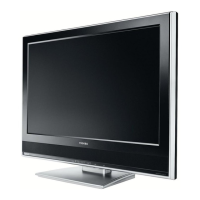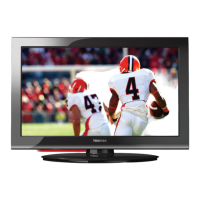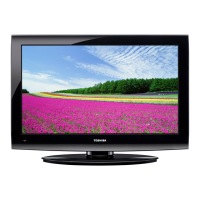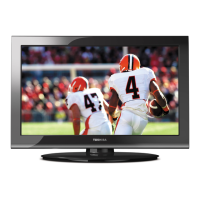20
Introduction
Overview of installation, setup, and use
Overview of installation, setup, and use
Follow these steps to set up your TV and begin using its many
exciting features.
1 Carefully read the important safety, installation, care, and
service information. Keep this document for future reference.
2 To choose a location for the TV:
v Read “Important notes about your TV” on page 8.
v PlacetheTVontheoororasturdy,level,stablesurface
that can support the weight of the unit. Secure the TV to a
wall, pillar, or other immovable structure, see 26) on page
5.
v PlacetheTVinalocationwherelightdoesnotreecton
the screen.
v Always leave a space of at least 4 (four) inches around the
TV. The slots and openings are provided to protect the TV
from overheating and to help maintain reliable operation
of the TV.
3 Do not plug in any power cords until after you have connected
all cables and devices to your TV.
4 Before connecting cables or devices to the TV, learn the
functions of the TV’s connections and controls, see “Advanced
Network Setup” on page 111.
5 Connect your other electronic device(s) to the TV, see “DNR
(Dynamic Noise Reduction)” on page 103.
6 Install the batteries in the remote control, see “Installing
batteries” on page 39.
7 See “Using the Remote Control” on page 39 for an overview of
the buttons on the remote control.
8 After connecting all cables and devices, plug in the power
cords for your TV and other devices. Then press the POWER
button on the TV control panel or remote control to turn on the
TV.
If the TV stops responding to the buttons on the remote control or TV
control panel and you cannot turn the TV off or on, unplug the power
cords for a few seconds and then plug them in and try again.
9 See “Navigating the menu system” on page 46 for a quick
overview of navigating the TV’s menu system.
10 Program channels into the TV’s channel memory, see “Auto
Tuning” on page 49.

